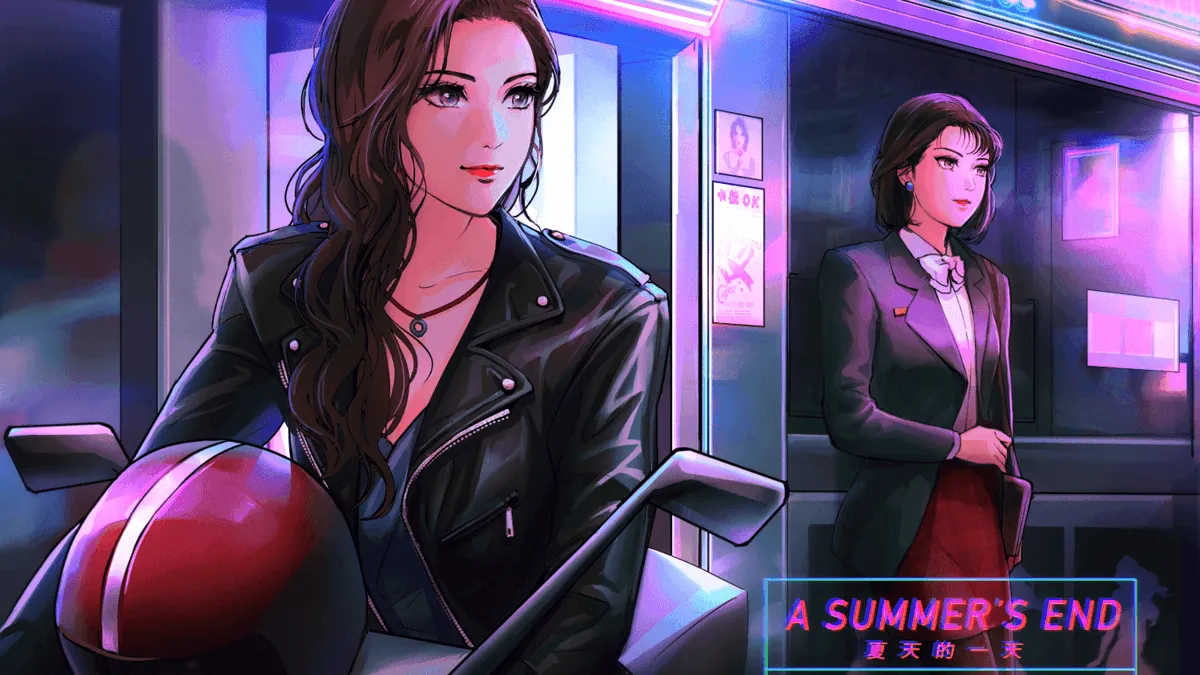
A Summer’s End – Hong Kong, 1986
Play A Summer’s End – Hong Kong, 1986
A Summer’s End – Hong Kong, 1986 review
Exploring the Story, Art, and Themes of A Summer’s End – Hong Kong, 1986
A Summer’s End – Hong Kong, 1986 is a richly crafted visual novel set against the vibrant backdrop of 1980s Hong Kong. This game invites players into the evolving relationship between Michelle and Sam, two women navigating love, identity, and cultural tensions during a transformative era. With its hand-drawn art inspired by 80s anime and an atmospheric soundtrack, the game offers a unique blend of storytelling and aesthetic appeal. Whether you’re drawn by its narrative depth or its nostalgic style, this article dives into what makes A Summer’s End a memorable experience.
Unpacking the Story and Characters of A Summer’s End – Hong Kong, 1986
Let me tell you about the first time I truly fell into the world of A Summer’s End – Hong Kong, 1986. It wasn’t just a game I played; it was an experience that stayed with me for days after. The emotional weight, the cultural richness, and the deeply human story of its two protagonists create something truly special. Today, we’re diving deep into the heart of this remarkable visual novel narrative to understand what makes its story and characters so unforgettable. 🏙️✨
Who Are Michelle and Sam? Exploring the Main Characters
At its core, the A Summer’s End story is a beautiful and intricate dance between two very different women. Michelle is a pragmatic, somewhat reserved office worker, firmly rooted in the traditional expectations of her family and her city. Sam, in contrast, is a free-spirited and charismatic bartender who represents a more modern, rebellious Hong Kong. 🍸👩💼
Their chance meeting in a bar sets off a chain of events that forms the beautiful, sometimes painful, heart of the game. You guide their interactions, and I found myself completely invested in every choice. The writing for these Michelle and Sam characters is so authentic that you feel their awkward silences, their budding affection, and their moments of tension as if you were right there with them.
What struck me most was how their personal journeys mirror each other. Michelle is learning to break free from the rigid path laid out for her, while Sam is grappling with her own vulnerabilities and the search for a place she can truly call home. Their relationship becomes the catalyst for profound self-discovery.
A Glimpse into Their World:
After a quiet moment, Sam turns to Michelle.
“You always do what’s expected of you, don’t you?”
Michelle looks down, a slight frown on her face.
“It’s not that simple. It’s about respect. It’s about family.”
“Is it? Or is it about fear?”
This small exchange perfectly captures the central cultural and personal tension. It’s not just a love story; it’s a story about two people helping each other become more fully themselves. Playing through their scenes, I was often reminded of my own struggles between duty and desire, making their journey feel incredibly personal. 💖
How Does the Narrative Reflect 1980s Hong Kong Culture?
The visual novel narrative of A Summer’s End is as much a love letter to a specific time and place as it is to its characters. The game is meticulously crafted to immerse you in the unique atmosphere of 1980s Hong Kong culture. This was a period of immense transition—a vibrant, bustling colony caught between its traditional Chinese roots and the looming influence of Western modernity. 🎆
You feel this tension everywhere. From the neon-drenched streets and synth-pop soundtrack to the conversations about future anxieties, the setting is a character in itself. The game doesn’t just tell you about this era; it makes you live it. The art style, inspired by 80s anime and retro aesthetics, is absolutely stunning and pulls you directly into this world.
A major pillar of this cultural portrait is the family dynamics in game. Michelle’s interactions with her mother are some of the most emotionally resonant parts of the story. There’s a palpable weight of expectation—the duty to marry well, to uphold the family name, to follow a safe and respectable path. These aren’t presented as villainous demands, but as a deeply ingrained part of the social fabric, making Michelle’s internal conflict all the more relatable and heartbreaking.
The game brilliantly showcases the clash between old and new through its environments and dialogue:
| Traditional Hong Kong | Modernizing Hong Kong |
|---|---|
| Family dinners and obligations | Western-style bars and nightlife |
| Focus on filial piety and respect | Emerging discussions of individual identity and freedom |
| Conservative social expectations | The vibrant, expressive arts and music scene |
This backdrop is crucial. It’s the pressure cooker that makes Michelle and Sam’s choices so significant and their connection so daring. The attention to detail in capturing this specific moment in history is what elevates the game from a simple romance to a profound cultural snapshot. 🇭🇰
What Themes Drive the Story Forward?
The power of A Summer’s End lies in how it weaves its core ideas into the very fabric of the character’s lives. The themes in A Summer’s End are not abstract concepts but lived experiences that drive every conversation and decision.
First and foremost, this is a powerful identity exploration game. Both Michelle and Sam are on a quest to define who they are outside of what society or their families demand. For Michelle, it’s about reconciling her love for her family with her desire for personal autonomy and love. For Sam, it’s about finding stability and authenticity in a world that often sees her as an outsider. Their journey forced me to reflect on the masks we all wear and the courage it takes to remove them. 🎭
The theme of love, in all its forms, is central. It’s not just romantic love, but also the complicated, sometimes painful love for one’s family. The game asks difficult questions: Can you truly love someone if it means sacrificing your own happiness? How do you honor your past while building your future?
Finally, the game is a masterful study of cultural conflict. This isn’t portrayed as a simple battle between East and West, but as an internal civil war within Michelle herself. The expectations of her Chinese heritage are constantly at odds with her personal desires and the changing world around her. This makes the A Summer’s End story incredibly nuanced. You understand why she hesitates, and you cheer for her every small step toward freedom.
My advice for anyone playing is to pay close attention to the quiet moments. 🎧 The most profound statements about these themes in A Summer’s End are often made in a sigh, a glance away, or a change in the music. It’s a story that trusts its audience to feel deeply, and that’s its greatest strength.
In the end, unpacking the story of A Summer’s End – Hong Kong, 1986 reveals a beautifully layered experience. The journey of the Michelle and Sam characters, set against a meticulously rendered portrait of 1980s Hong Kong culture, creates a timeless narrative about the universal search for self. Its powerful themes of love, identity, and duty resonate long after the final choice is made, solidifying its place as a landmark in visual novel narrative. 🌟
A Summer’s End – Hong Kong, 1986 stands out as a beautifully crafted visual novel that combines a heartfelt story with striking retro visuals and an evocative soundtrack. Its nuanced portrayal of love and identity in a culturally rich setting offers players a meaningful experience beyond typical genre expectations. Whether you engage with its narrative alone or explore the optional content, this game invites reflection and connection. Dive into this unique journey and discover the charm of 1980s Hong Kong through Michelle and Sam’s eyes.












